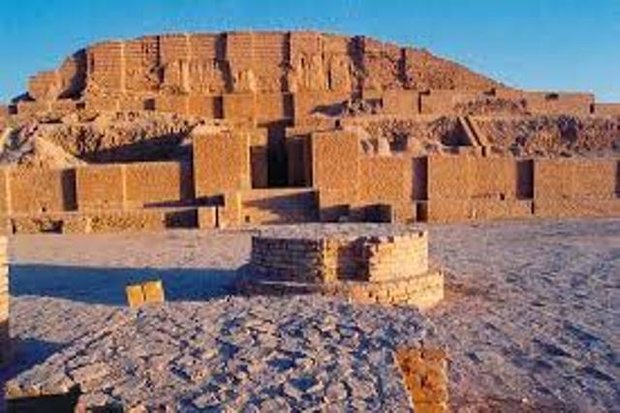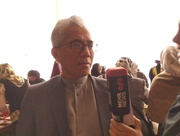Susa, also called Shoush, is located in the southwestern province of Khuzestan at an altitude of 300 meters above sea level. The city is located 215 km north of Abadan.
The ancient city of Susa, capital of Elam, was an important and thriving city. Scientific excavations began by French archeological missions in 1891 CE, and continued until the present time, have brought to light many remains and relics of a prehistoric civilization, irantravelingcenter.com reported.
For instance, copper objects and utensils discovered in the lowest stratum, have resulted in ascribing this layer to the Copper Age, while the existence of yellow-colored earthenware, decorated with animal motifs and geometric designs have evidenced the existence of a pottery-making industry in Iran, some 3,000 to 2,500 years before Christ.
In the second stratum of this Elamite city, a great number of objects made of stone, copper and other metals, and some cylinders made of bone have been discovered, while the higher strata have revealed kiln-fired, colored and decorated earthenware, metal arms, cylinders, copper pins, as well as human and animal figures.
The historic site of Susa is divided into four sections according to their antiquity and archeological importance. In all these sections, ample relics including pottery, arms, ornamental objects, metalwork, bronze articles, as well as tablets, bearing traces of pictographic writing, have been discovered.
Similarly, numerous clay and stone tablets dating back to 1,700 BCE have been unearthed in Susa. The texts of these tablets are usually of documentary, legal or contractual nature.
Excavation History
The site was examined in 1836 by Henry Rawlinson and then by A. H. Layard.
In 1851, some modest excavation was done by William Loftus, who identified it as Susa.
In 1885 and 1886 Marcel-Auguste Dieulafoy and Jane Dieulafoy began the first French excavations.
Jacques de Morgan conducted major excavations from 1897 until 1911. These efforts continued under Roland De Mecquenem until 1914, at the beginning of World War I. French work at Susa resumed after the war, led by De Mecquenem, continuing until World War II in 1940. Archaeological results from the later period were very thinly published and attempts are underway to remedy this situation.
Roman Ghirshman took over direction of the French efforts in 1946, after the end of the war. Together with his wife Tania Ghirshman, he continued there until 1967. The Ghirshmans concentrated on excavating a single part of the site, the hectare sized Ville Royale, taking it all the way down to bare earth. The pottery found at the various levels enabled a stratigraphy to be developed for Susa.
During the 1970s, excavations resumed under Jean Perrot.
Early Settlement
Archeologists have dated the first traces of an inhabited Neolithic village to c 7000 BCE. Evidence of a painted-pottery civilization has been dated to c 5000 BCE. Painted ceramic vessels from Susa in the earliest first style are a late, regional version of the Mesopotamian Ubaid ceramic tradition that spread across the Near East during the fifth millennium B.C.
In urban history, Susa is one of the oldest-known settlements of the region. Based on C14 dating, the foundation of a settlement there occurred as early as 4395 BCE (a calibrated radio-carbon date). At this stage it was already very large for the time about 15 hectares.
The founding of Susa corresponded with the abandonment of nearby villages. Potts suggests that the settlement may have been founded to try to reestablish the previously destroyed settlement at Chogha Mish. Previously, Chogha Mish was also a very large settlement, and it featured a similar massive platform that was later built at Susa.
Another important settlement in the area is Chogha Bonut, that was discovered in 1976.
UNESCO Heritage List
On July 5, 2015, Iran’s historical sites Susa finally inscribed to the United Nations Educational, Scientific and Cultural Organization’s (UNESCO) Prestigious World Heritage List at the 39th session of the World Heritage Committee.

























Your Comment